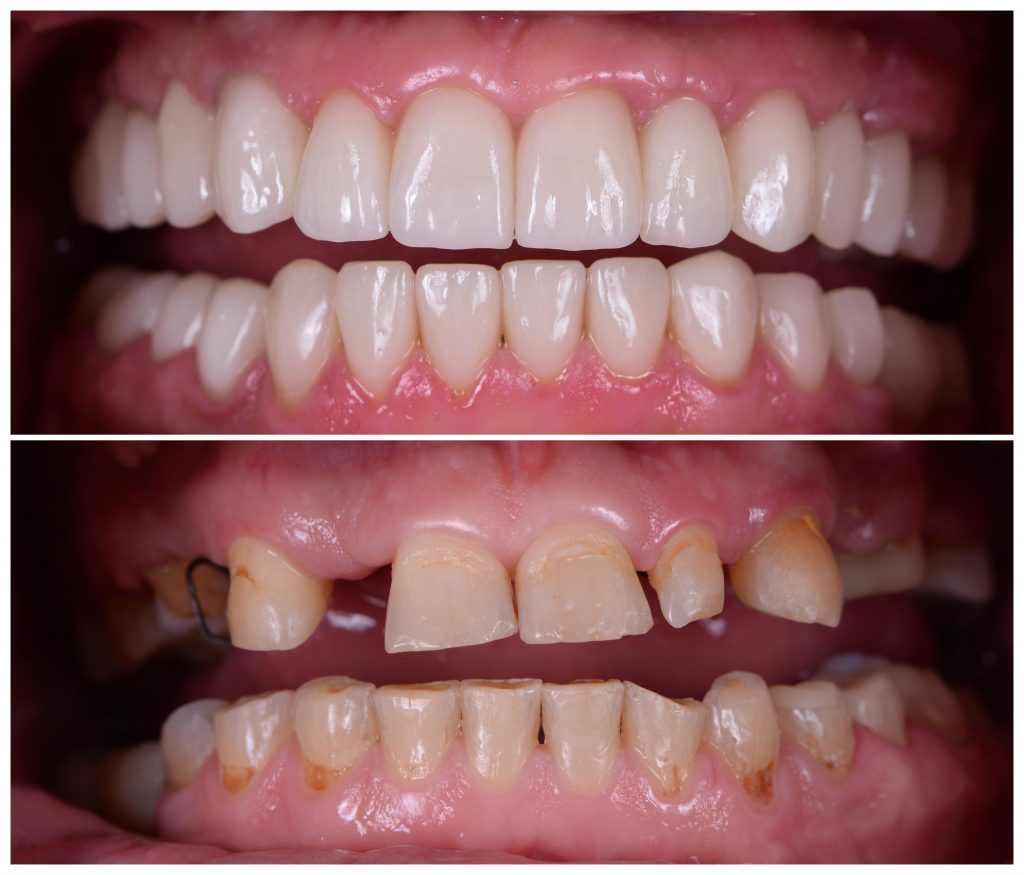Gentle Care Dentistry & Implants
General Dentist & Dental Implant Provider located in Sierra Vista, AZ
General Dentist & Dental Implant Provider located in Sierra Vista, AZ
Endosteal dental implants are tooth restorations placed directly in the jawbone. Typically made of titanium, they’re the most common type of implant used for replacing teeth. Endosteal implants mimic the shape of a natural tooth root as they’re placed into the jaw, creating a secure foundation for a permanent restoration, such as a dental crown, to be placed on top of the titanium implant.
There are multiple dental implant treatment options available with endosteal implants, including implant-supported dentures, single-tooth replacements, and more. Call our Sierra Vista dentist today at (520) 458-9460 to find out more about the implant treatments we offer at our dental practice.
An endosteal implant provides various advantages, including:
 What is an Endosteal Implant?
What is an Endosteal Implant?An endosteal implant is a type of dental implant that is surgically placed within the jawbone to replace a missing tooth. Acting as an artificial tooth root, it provides a robust foundation for a permanent restoration, such as a crown, bridge, or denture. These implants are typically made from biocompatible titanium, a material known for its strength, lightweight properties, and resistance to corrosion. Titanium’s biocompatibility ensures a low likelihood of rejection by the body, making it an ideal choice for dental implants. With an endosteal implant, you can enjoy a permanent solution that looks, feels, and functions like a natural tooth.
When considering dental implants, it’s essential to understand the differences between endosteal and subperiosteal implants. Endosteal implants are placed directly within the jawbone, providing a secure and stable foundation for the replacement tooth. In contrast, subperiosteal implants rest on top of the jawbone but beneath the gum tissue, with posts that protrude through the gums to hold the restoration. While both types serve the purpose of replacing missing teeth, endosteal implants are generally preferred due to their stronger bond with the jawbone and higher success rates. This makes them a more reliable and long-lasting option for most patients.
Endosteal implants work by replacing the missing tooth root. During the endosteal implant procedure, which is an outpatient process performed in stages over several months, a small titanium post is surgically placed into the jawbone by an oral surgeon. The implant is left to heal and fuse with the bone, a natural process known as osseointegration. Once the implant has fused with the jawbone, the dental surgeon attaches an abutment and then an artificial tooth to the metal post.
While the entire procedure is completed in one visit, the recovery period varies between three and six months. Patients will achieve a beautiful, complete smile that functions just like their natural teeth.
The journey to receiving endosteal implants begins with a thorough consultation with your dentist or oral surgeon. During this initial appointment, your dental professional will evaluate your overall and dental health, focusing on the condition of your jawbone and gums. This assessment helps determine if you are a suitable candidate for endosteal implants. Your dentist will also discuss the procedure in detail, including potential risks and benefits, and address any questions or concerns you may have. If you are deemed a good candidate, a personalized treatment plan will be created. This plan may include supplementary procedures, such as bone augmentation, to ensure a successful implant placement and optimal results.
Your candidacy for endosteal dental implants can be determined by your oral surgeon or dentist. To be a good candidate for endosteal implants, you need adequate jawbone density and must be in good overall health. Patients with chronic illnesses, such as diabetes, or those who smoke or use tobacco products may not be candidates as it increases their chances of implant failure.
Endosteal dental implants aren’t recommended for patients with severe bone loss. For those specific cases, your dentist may consider other tooth replacement options or a supplemental procedure, such as bone grafting or a sinus lift. In some instances, your dentist may need to perform bone grafting after the removal of a damaged tooth to ensure optimal conditions for the implant procedure.
Ideal candidates for endosteal implants meet the following criteria:
While an endosteal implant is the most popular type, there are other alternative implants and tooth replacement options. A dental professional may recommend any of the following alternatives:
To determine the best tooth replacement option, your dentist or oral surgeon will evaluate your dental health and discuss your smile goals. If you’re in Sierra Vista, contact our dentist today to schedule your implant consultation.
 Frequently Asked Questions
Frequently Asked QuestionsWhile the surgical procedure for endosteal dental implants only takes one visit to the dentist, the entire endosteal implant process typically takes several months to complete. The implant will naturally fuse with the jawbone before the permanent restoration can be placed on top of the metal posts.
Patients can expect the entire treatment to last between three and nine months. However, some patients may need to undergo additional surgery, such as bone augmentation, to create the solid base needed for the implant body.
Endosteal dental implant surgery typically causes minimal pain as only a small incision is needed. The procedure is also usually done with some type of dental sedation. After the procedure, patients may experience some discomfort and swelling, but they can manage this discomfort with over-the-counter pain medications and cold compresses.
Endosteal dental implants can last a lifetime with proper aftercare and oral hygiene. To increase their longevity, make sure you’re maintaining good oral hygiene, visiting the dentist for regular dental check-ups, and avoiding habits such as smoking or grinding your teeth.
Yes, endosteal dental implants can replace multiple missing teeth by placing several implants into the jawbone. Typically, these treatments are known as implant-supported dentures or implant-supported bridges. Your treatment is custom-designed to meet your needs.
Endosteal dental implants are a highly effective and long-lasting solution for replacing missing teeth. Not only do they look and function like natural teeth, but they also help preserve the integrity of the jawbone and prevent surrounding teeth from shifting.
To learn more about endosteal dental implants, contact our Sierra Vista dentist today by calling (520) 458-9460.
